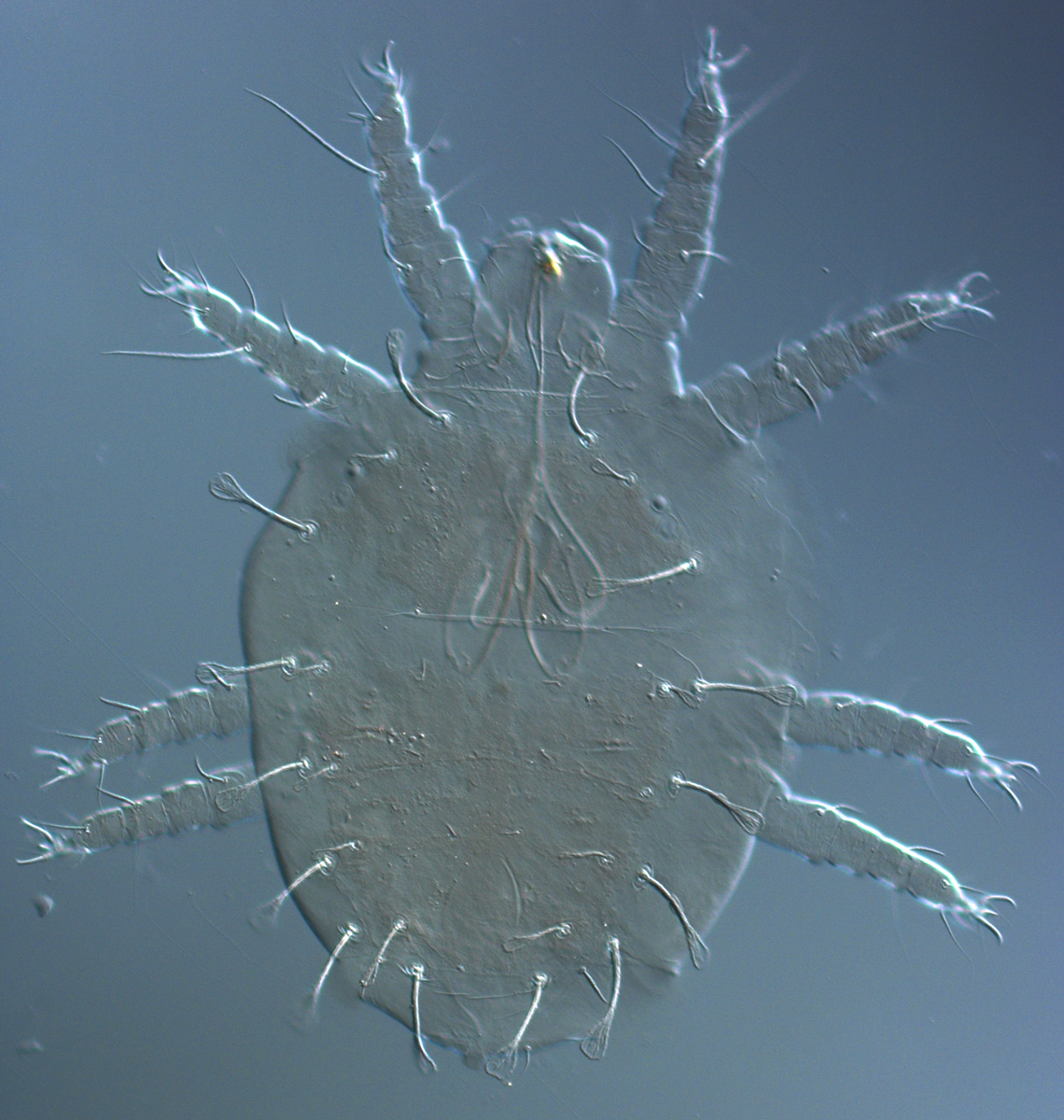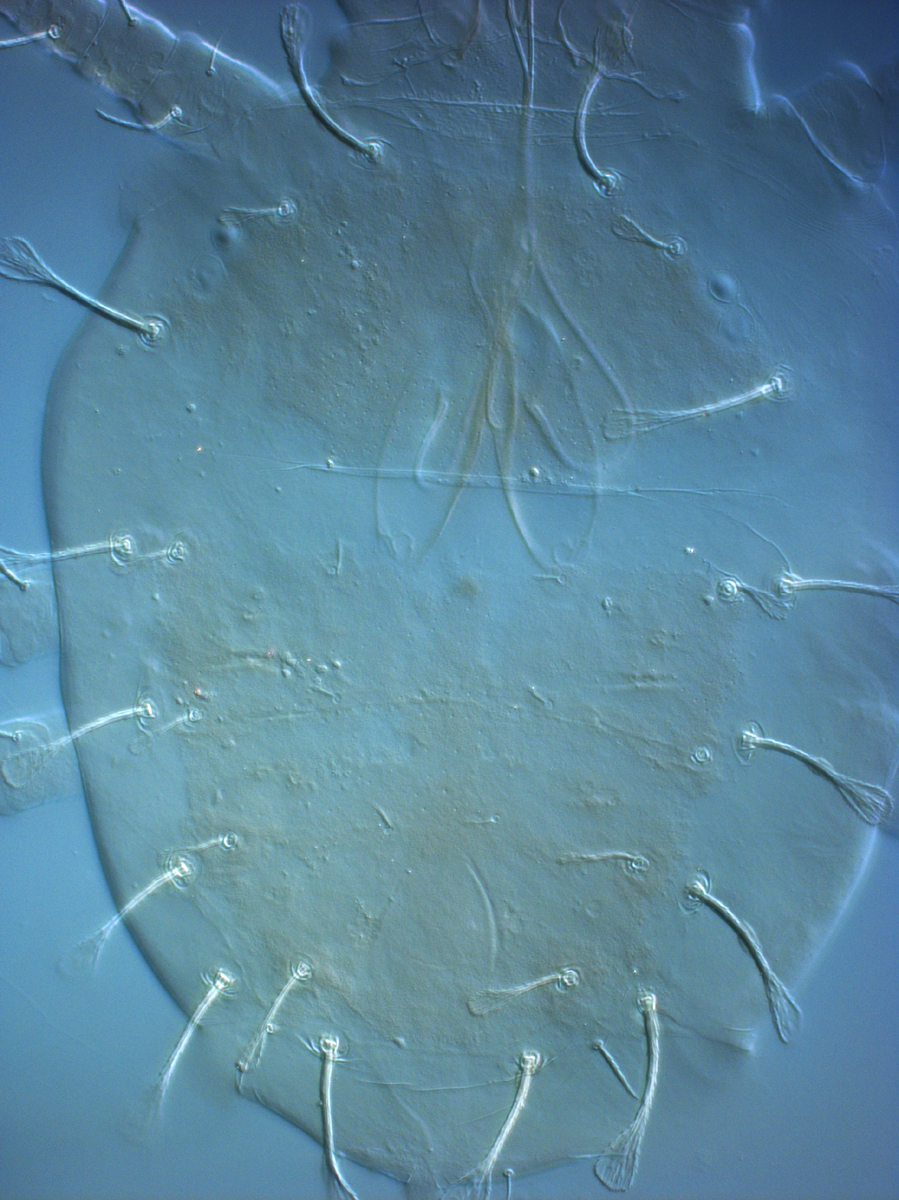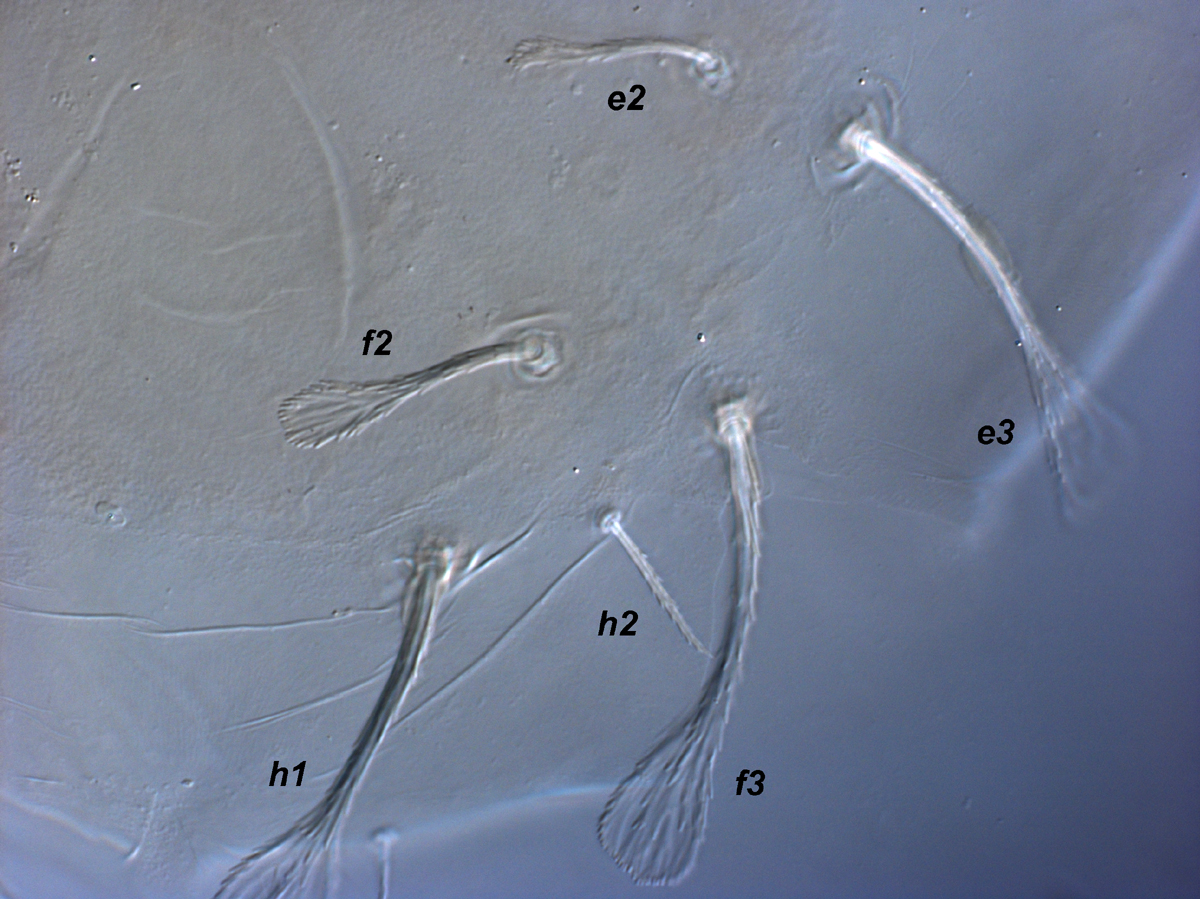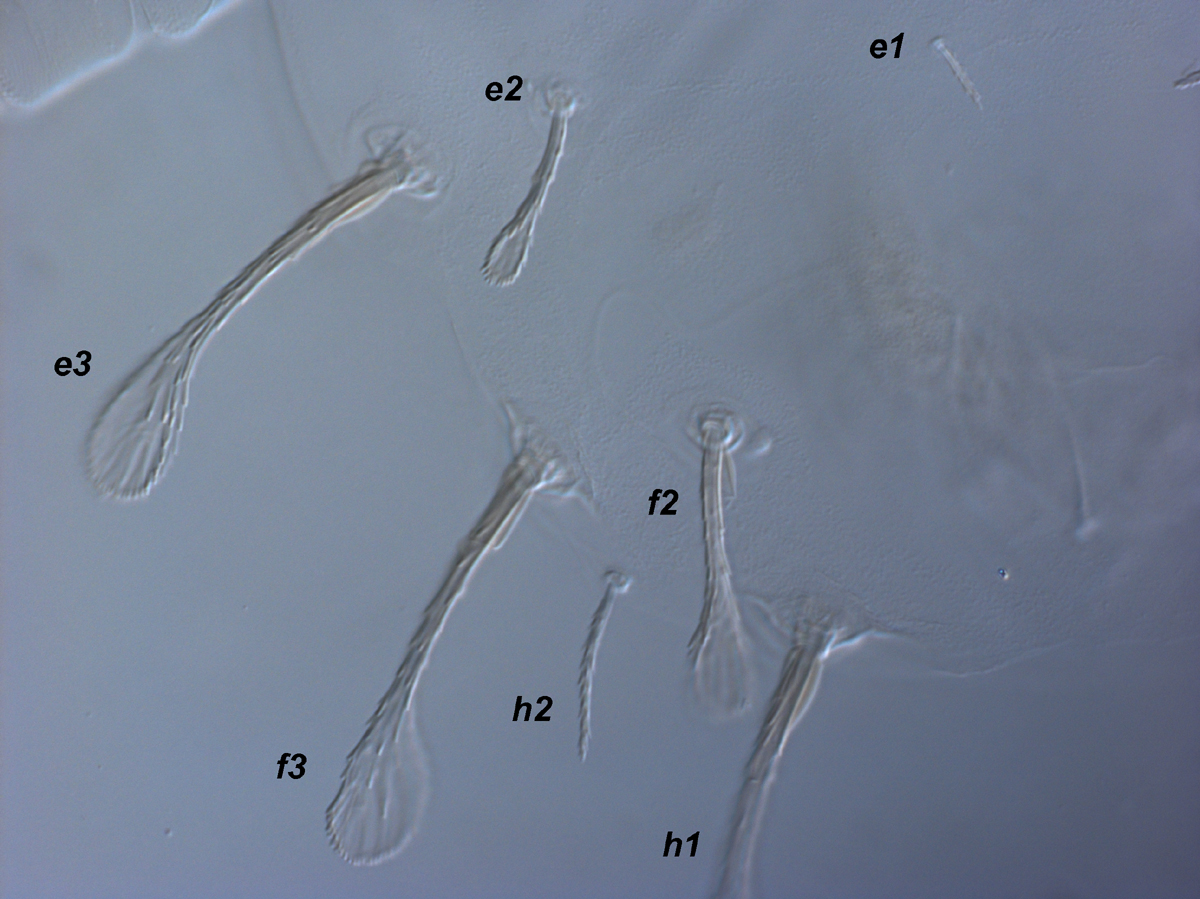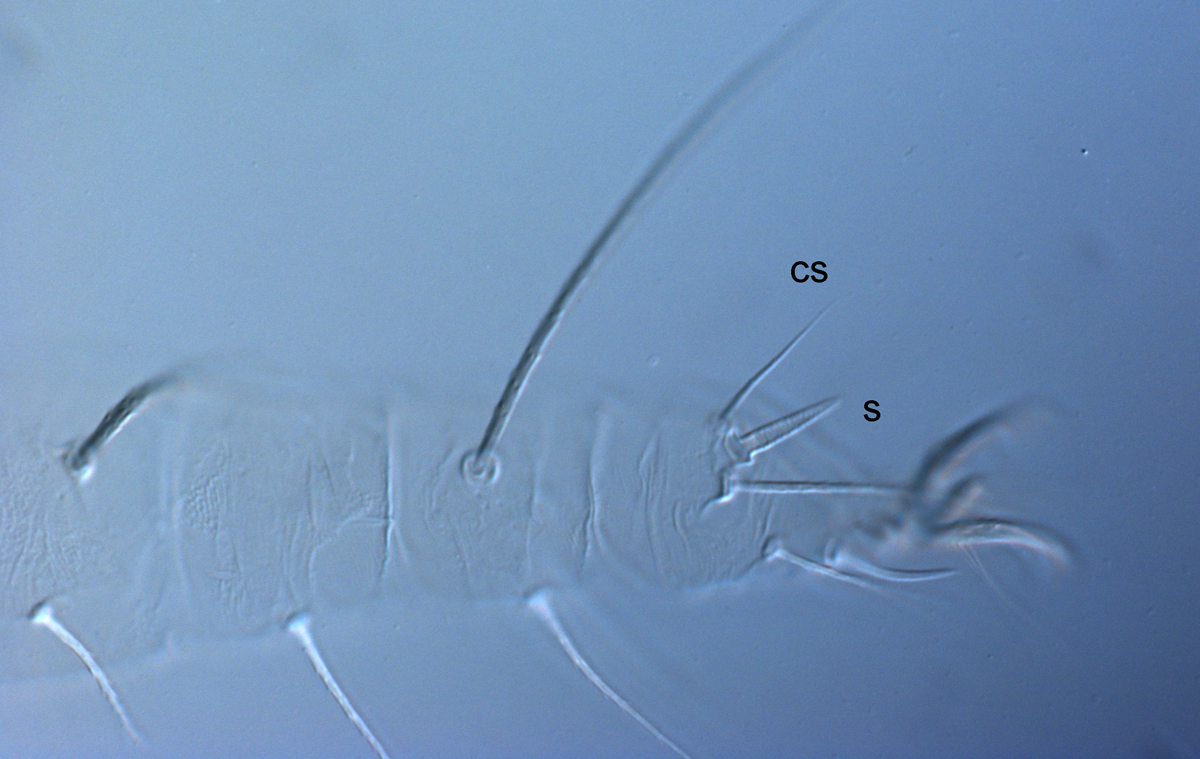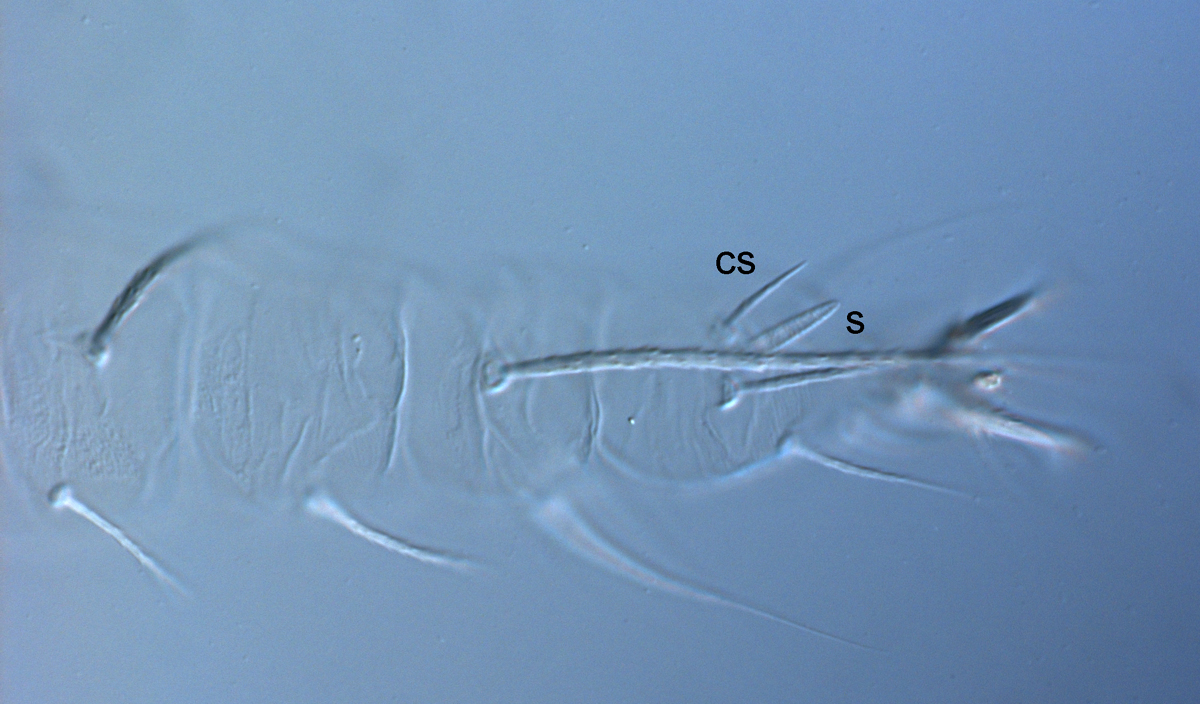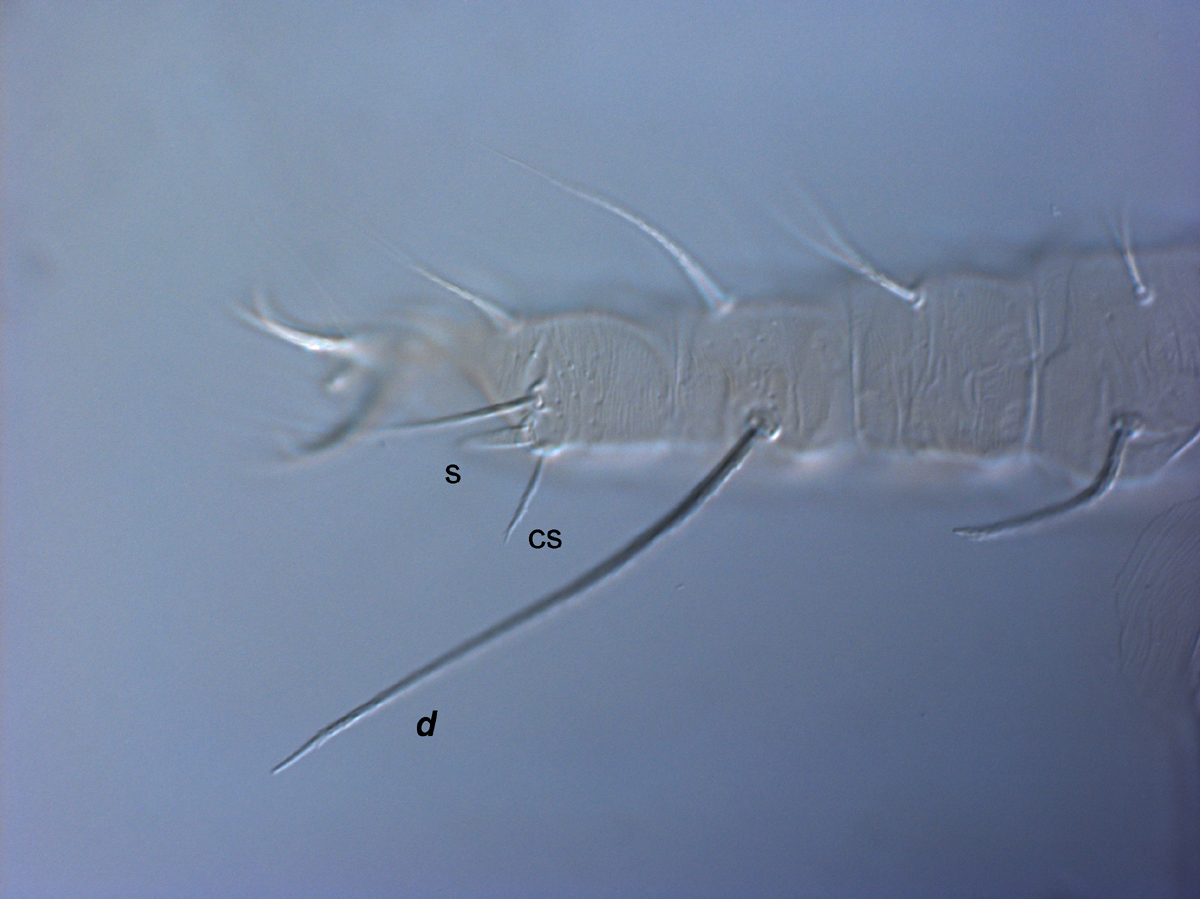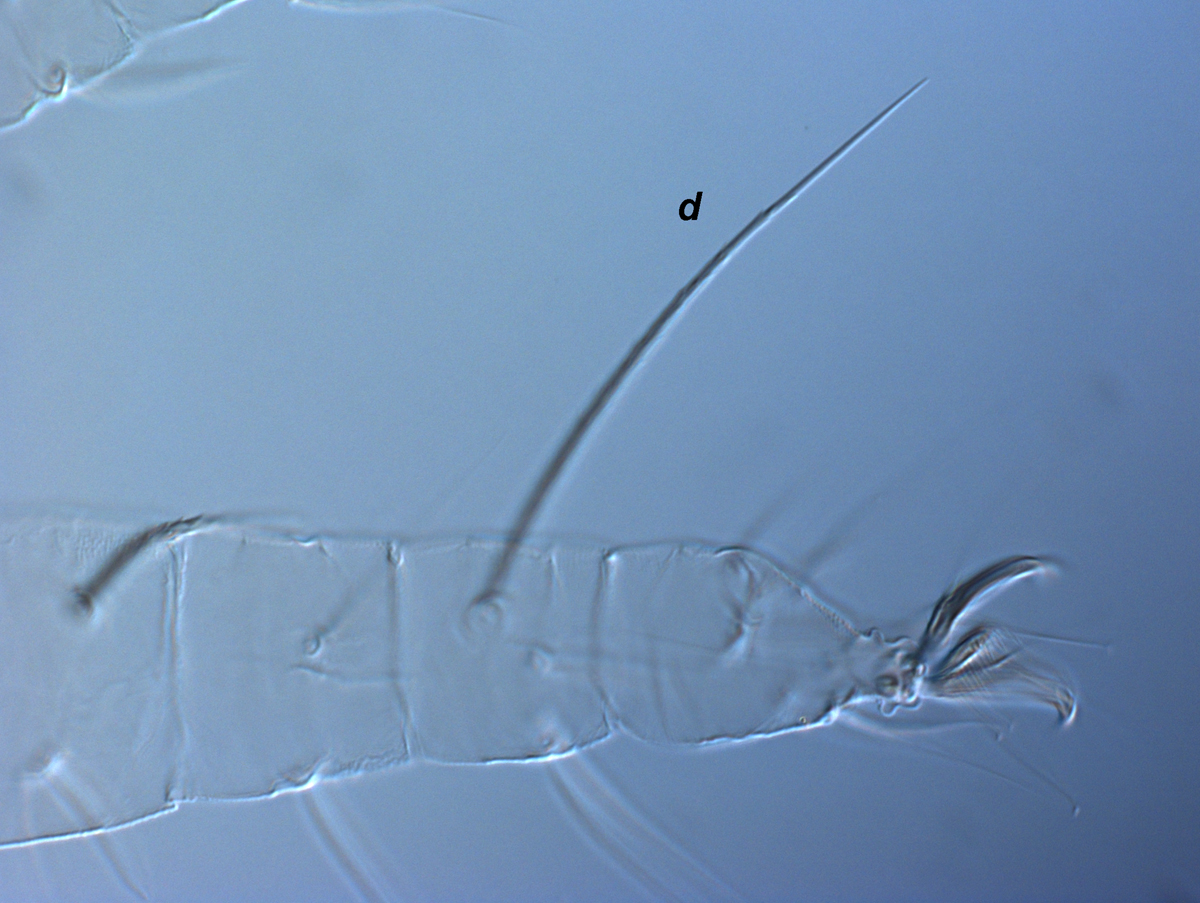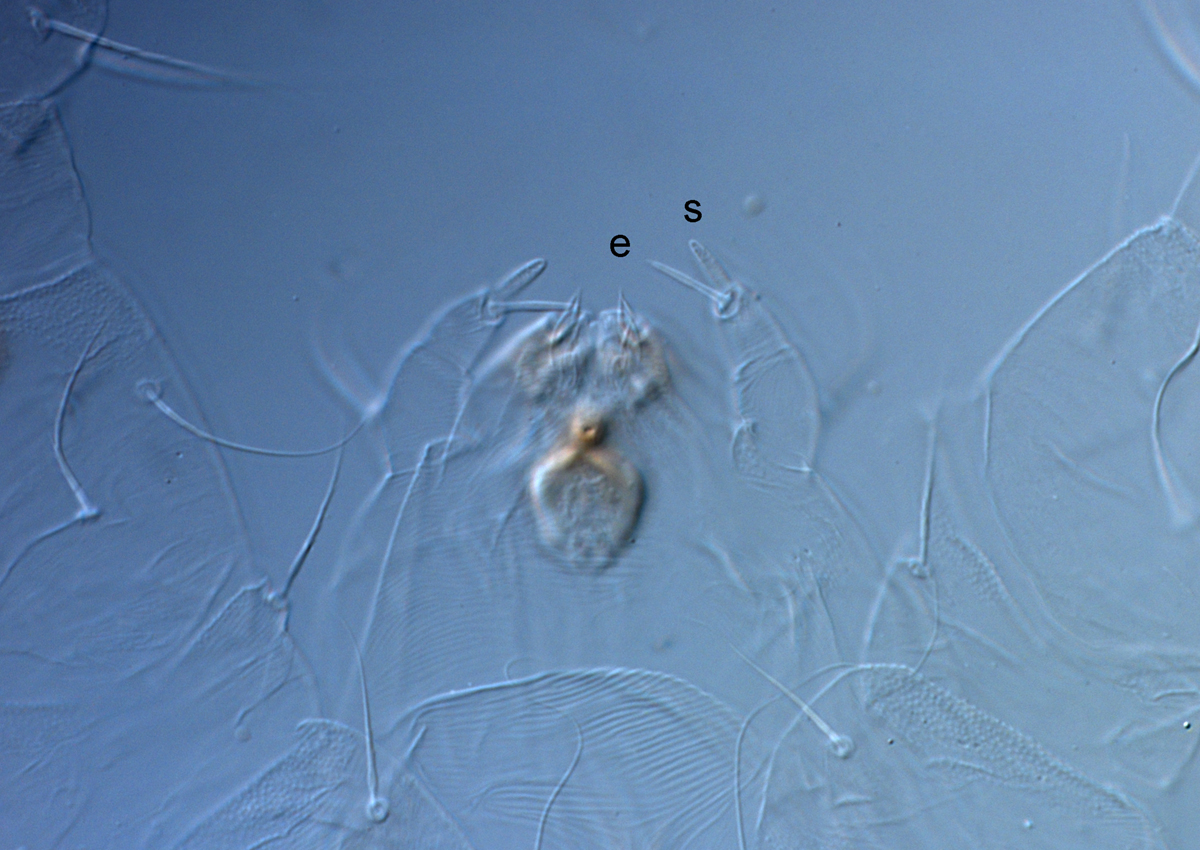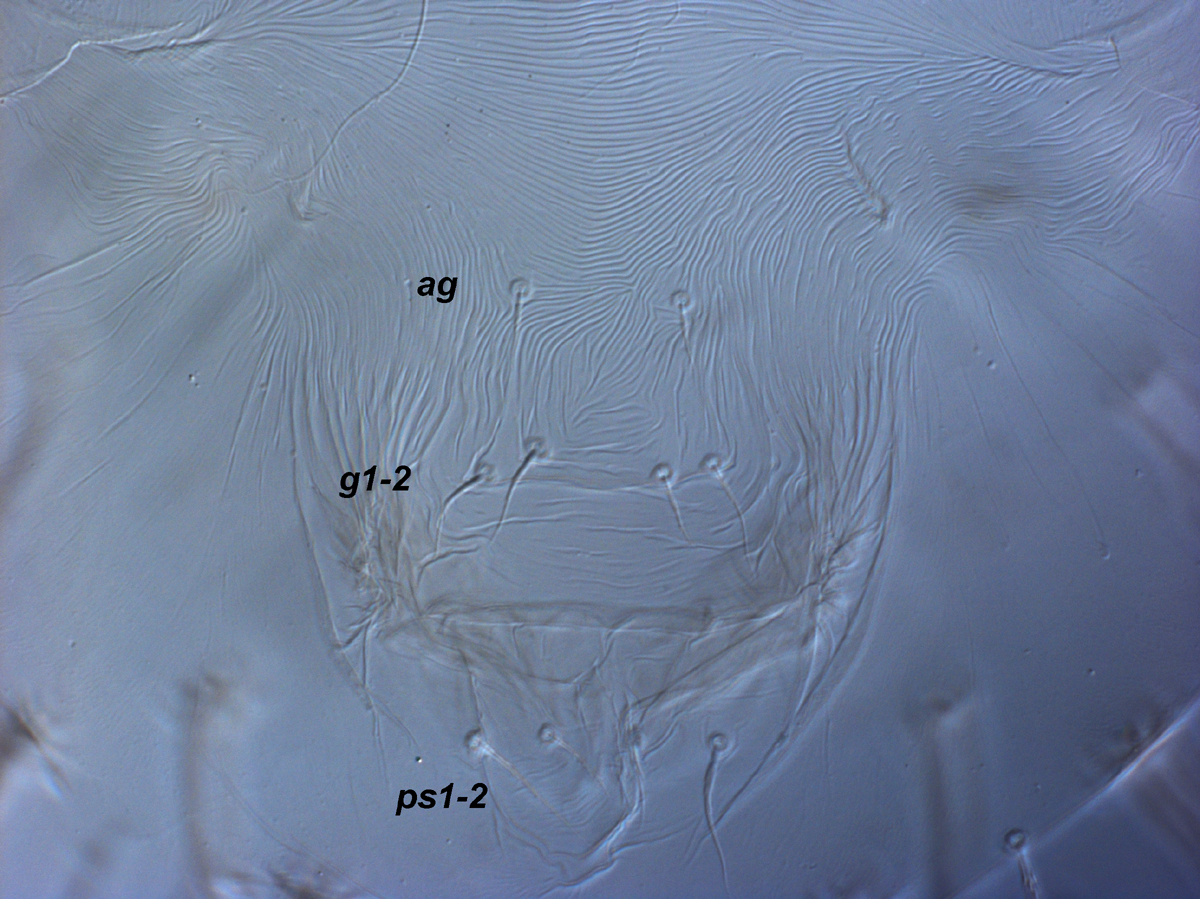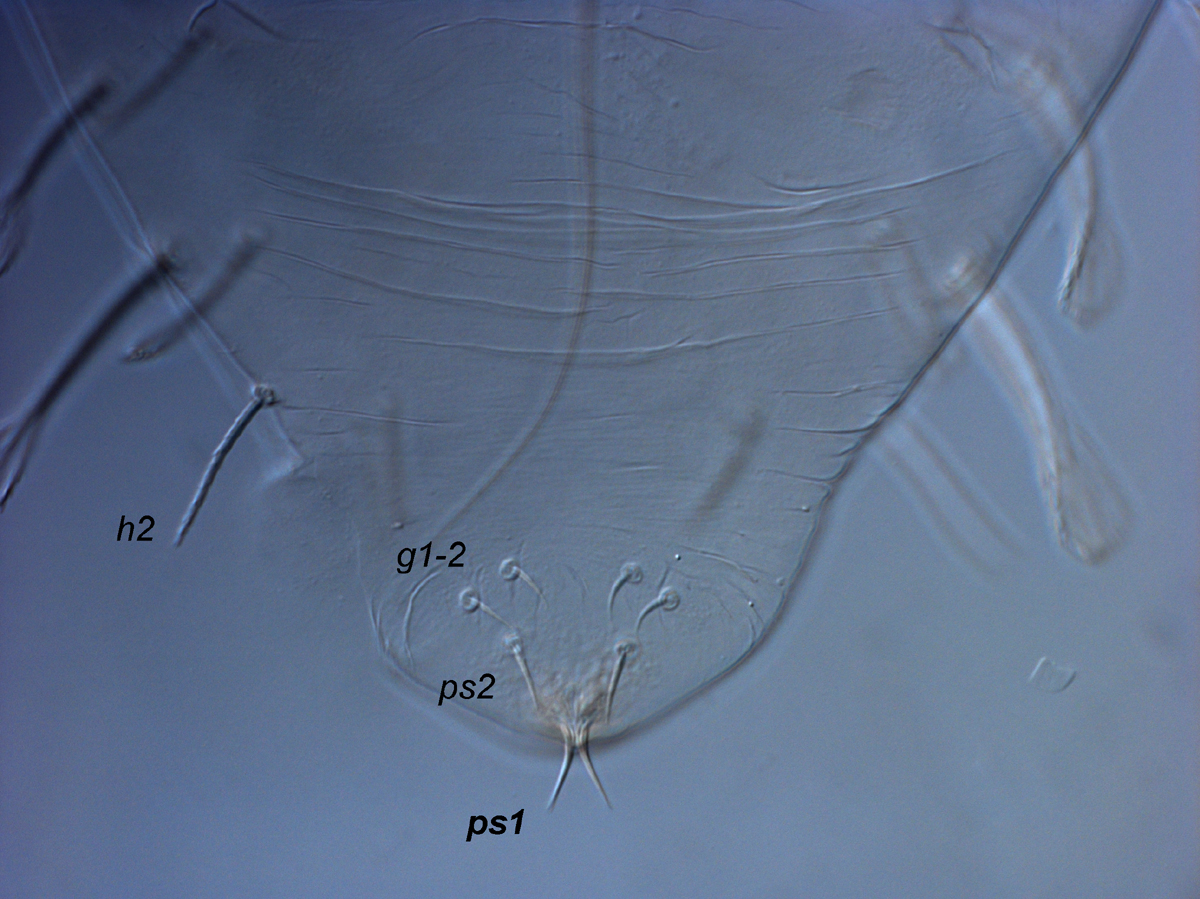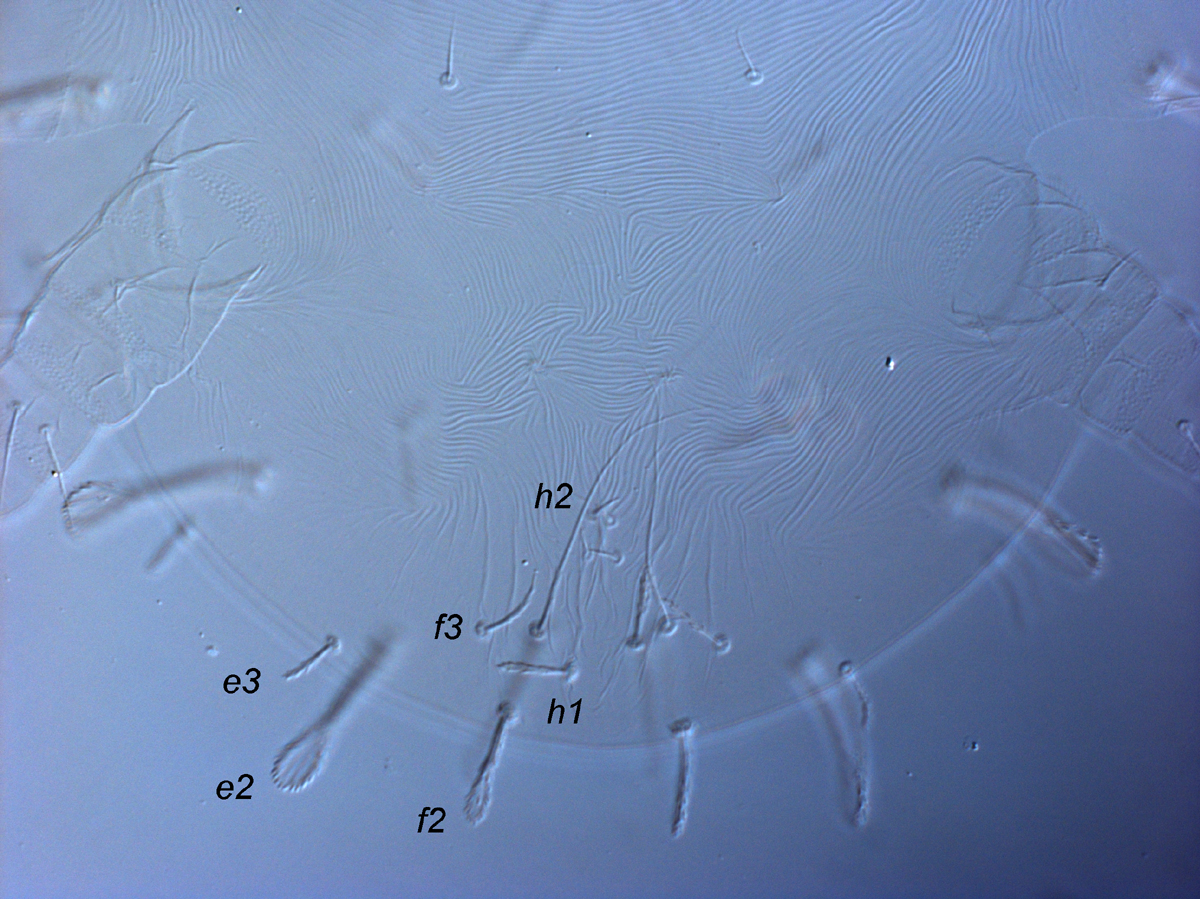Raoiella australica
|
Fig. 1. Raoiella australica adult female dorsum. |
|
Fig. 2. Raoiella australica adult female dorsum. |
|
Fig. 3. Raoiella australica adult female, central dorsum. |
|
Fig. 4. Raoiella australica adult female, posterior dorsum. |
|
Fig. 5. Raoiella australica adult female, posterior dorsum. |
|
Fig. 6. Raoiella australica adult female leg I (cs = companion seta, s = solenidion). |
|
Fig. 7. Raoiella australica adult female leg II (cs = companion seta, s = solenidion). |
|
Fig. 8. Raoiella australica adult female leg II (d = dorsal seta on tibia II, cs = companion seta, s = solenidion). |
|
Fig. 9. Raoiella australica adult female leg I (d = dorsal seta on tibia). |
|
Fig. 10. Raoiella australica adult female palps (s = solenidion, e = eupathidium). |
|
Fig. 11. Raoiella australica adult female posterior venter. |
|
Fig. 12. Raoiella australica adult male, posterior venter (indicating modified ps1 setae). |
|
Fig. 13. Raoiella australica larva, posterior venter, indicating elongate, filiform setae h2. |
Authority
Womersley
Key characters
- setae c1, d1, e1 minute, blunt, without spatulate tips (Figs. 1, 2, 3)
- seta h1 longer than h2 (Figs. 4, 5 )
- seta h2 short, tapered, without spatulate tip (Figs. 4, 5)
- seta f2 shorter than f3 (Figs. 4, 5)
- coxae III-IV nude
- femur II with 4 setae (d, l', bv", v')
- genua I-II with 2 setae (l', l" present; d absent)
- tarsus I with companion seta longer than solenidion (Fig. 6)
- tarsus II with companion seta subequal in length to solenidion (Figs. 7, 8)
- dorsal seta on tibiae I-II setiform, tapered (but not finely tapered) (Figs. 8, 9)
- palp tibiotarsus with one solenidion and one blunt eupathidium distally (Fig. 10), and one seta dorsally
- setae ps1 and ps2 inserted adjacent to each other (Fig. 11)
- male with moderately long ps1 setae, 15-17 microns (Fig. 12)
- male femur II with 4 setae (d, l', bv", v')
- male genua I-II with 3 setae (d, l', l")
- larva with setae h2 elongate, filiform (Fig. 13)
Similar species
Raoiella australica is morphologically similar to Raoiella species 7 and 8.
Raoiella australica: male prodorsal setae sc2 < 45 microns; male prodorsal setae v2 < 30; female with setae d on femora II-IV and tibiae III-IV with blunt tips; found in eastern Australia.
Raoiella species 7: male prodorsal setae sc2 > 45 microns; male prodorsal setae v2 < 30 microns; female with setae d on femora II-IV and tibiae III-IV with tapered tips; found in western Australia.
Raoiella species 8: male prodorsal setae sc2 > 45 microns; male prodorsal setae v2 > 40 microns; found in eastern Australia.
Distribution
Australia (NSW)
Hosts
Bangalay/Southern Mahogany - Sydney blue gum intergrade (= Eucalyptus botryoides-Eu. saligna intergrade) (Myrtaceae).
Remarks
This species was redescribed by Beard et al. (2018) and placed in the newly proposed australica species group.
The type slides of Raoiella australica cannot be found. We managed to study some material stored in alcohol, with location/host data matching the Queensland collections listed in the original description. However, the specimens were in very poor condition and there were two different collection labels inside the vial, with two different collection sites listed. There was no material from the type locality in New South Wales available for examination.
After examination of the available material, the specimens collected from Queensland are not considered to be Raoiella australica. They are most likely a new species, and will be dealt with in the future.
Beard was able to recollect R. australica from near the type locality.
Raoiella australica was listed as species 6 in Dowling et al. (2012).
References
Akbar (1990); Akbar & Chaudhri (1987); Beard et al. (2018); Dowling et al. (2012); Meyer (1979); Mitrofanov & Strunkova (1979); Pritchard & Baker (1958); Smiley & Gerson (1995); *Womersley (1940)
* - original description

